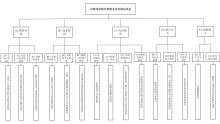| [1] |
HALBURAGI S, MUKARAMBI P. Use of artificial intelligence (AI) technology futures in library[J]. International journal of research in library science, 2023, 9(2): 14-19.
|
| [2] |
中国政府网. 中共中央关于进一步全面深化改革 推进中国式现代化的决定[EB/OL]. [2025-05-01]. .
|
| [3] |
郑一波, 曾建勋. 图书馆资源发现系统的实质与应对策略[J]. 情报科学, 2022, 40(8): 134-137, 143.
|
|
ZHENG Y B, ZENG J X. The essence and coping of library resource discovery system[J]. Information science, 2022, 40(8): 134-137, 143.
|
| [4] |
李慧芳, 孟祥保. 近十年国内外图书馆资源发现系统研究与实践进展述评[J]. 图书情报工作, 2020, 64(6): 120-129.
|
|
LI H F, MENG X B. A review of research and practice of library resource discovery system in domestic and foreign: 2010-2019[J]. Library and information service, 2020, 64(6): 120-129.
|
| [5] |
CHEN Y N. An evaluation approach for linked data public access catalogs[J]. Journal of library and information studies, 2021, 2: 113-143.
|
| [6] |
寿建琪. 走向“已知之未知”:GPT大语言模型助力实现以人为本的信息检索[J]. 农业图书情报学报, 2023, 35(5): 16-26.
|
|
SHOU J Q. Towards known unknowns: GPT large language models empower Human-Centered information retrieval[J]. Journal of library and information science in agriculture, 2023, 35(5): 16-26.
|
| [7] |
孙绍丹, 邓君, 张子姝, 等. 融入知识元概念的近代报纸资源主题知识组织研究——以《盛京时报》为例[J]. 农业图书情报学报, 2022, 34(4): 50-62.
|
|
SUN S D, DENG J, ZHANG Z S, et al. Topic knowledge organization of modern newspaper resources by incorporating the knowledge element concept: Taking the "Shengjing Times" as an example[J]. Journal of library and information science in agriculture, 2022, 34(4): 50-62.
|
| [8] |
蔡祎然, 胡正银, 刘春江. 大语言模型赋能科技文献数据挖掘进展分析[J]. 农业图书情报学报, 2025, 37(2): 4-22.
|
|
CAI Y R, HU Z Y, LIU C J. Analysis of progress in data mining of scientific literature using large language models[J]. Journal of library and information science in agriculture, 2025, 37(2): 4-22.
|
| [9] |
李颖, 张果, 曹羽飞. 基于用户需求的学术资源发现系统服务功能研究[J]. 图书馆工作与研究, 2025(5): 44-54, 96.
|
|
LI Y, ZHANG G, CAO Y F. Research on the service function of academic resource discovery system based on user needs[J]. Library work and study, 2025(5): 44-54, 96.
|
| [10] |
张瑞红. 基于过程控制的图书馆知识管理动态评价模型研究[J]. 图书馆学研究, 2013(17): 69-72.
|
|
ZHANG R H. Library knowledge management dynamic evaluation model based on process control[J]. Research on library science, 2013(17): 69-72.
|
| [11] |
司莉, 何依, 郭晓彤. 国外知识组织研究主题、特征及思考[J]. 情报资料工作, 2024, 45(1): 12-22.
|
|
SI L, HE Y, GUO X T. Research on foreign knowledge organization: Themes, characteristics and thoughts[J]. Information and documentation services, 2024, 45(1): 12-22.
|
| [12] |
范昊, 郑小川, 热孜亚·艾海提, 等. 基于知识图谱的标准文献多维知识发现研究[J]. 情报理论与实践, 2023, 46(9): 175-184.
|
|
FAN H, ZHENG X C, REZIYA A, et al. Research on multidimensional knowledge discovery of standards based on knowledge graph[J]. Information studies: Theory & application, 2023, 46(9): 175-184.
|
| [13] |
BUSTAMANTE G R, NELSON E J, AMES D P, et al. Water data explorer: An open-source web application and Python library for water resources data discovery[J]. Water, 2021, 13(13): 1850.
|
| [14] |
CHEN Y N. An investigation of linked data catalogue features in libraries, archives, and museums: A checklist approach[J]. The electronic library, 2023, 41(5): 700-721.
|
| [15] |
毕强. 数字图书馆知识组织系统建构的发展趋势: 从机器可读到机器可理解[J]. 国家图书馆学刊, 2010, 19(1): 12-17.
|
|
BI Q. Development trend of knowledge organization system construction in digital library: From machine readability to machine understandability[J]. Journal of the national library of China, 2010, 19(1): 12-17.
|
| [16] |
SARACEVIC T. Modeling interaction in information retrieval (IR): A review and proposal[J]. Proceedings of the American society for information science, 1996, 33: 3-9.
|
| [17] |
ZHANG Y F, BELLAMY R, VARSHNEY K. Joint optimization of AI fairness and utility: A human-centered approach[C]//Proceedings of the AAAI/ACM Conference on AI, Ethics, and Society. New York NY USA. ACM, 2020: 400-406.
|
| [18] |
AMERSHI S, WELD D, VORVOREANU M, et al. Guidelines for human-AI interaction[C]//Proceedings of the 2019 CHI Conference on Human Factors in Computing Systems. Glasgow Scotland Uk. ACM, 2019: 1-13.
|
| [19] |
BORGMAN C L. From Gutenberg to the global information infrastructure: Access to information in the networked world[M]. Cambridge: MIT Press, 2000.
|
| [20] |
ARMS W Y. Digital libraries[M]. Cambridge: MIT Press, 2000.
|
| [21] |
邓雪, 李家铭, 曾浩健, 等. 层次分析法权重计算方法分析及其应用研究[J]. 数学的实践与认识, 2012, 42(7): 93-100.
|
|
DENG X, LI J M, ZENG H J, et al. Research on computation methods of AHP wight vector and its applications[J]. Mathematics in practice and theory, 2012, 42(7): 93-100.
|






